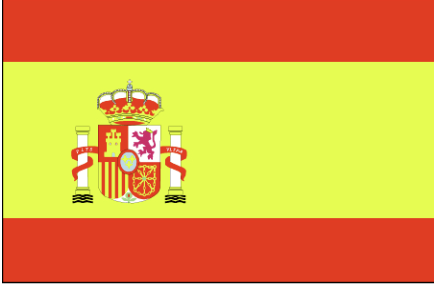
Spanish Definite Articles

Overview
When learning Spanish, students quickly discover that the Spanish language shows numbers and gender in nouns and adjectives. Consequently, the article “the” reflects gender and number. This lesson will introduce students to the concept that there are four words for “the” in Spanish and they must choose the right one depending on the gender and number of the noun they are using. Additionally, this lesson will introduce students to the online dictionary at WordReference.com and how to use Google Slides to create a basic slideshow.
Learning Objectives
Students will:
-
Be able to use WordReference.com to identify the gender of a Spanish noun.
-
Be able to choose the correct Spanish definite article (EL, LA, LOS, LAS) for a noun.
-
Be able to take pictures and load them to Google Slides using their devices.
-
Be able to present their slideshow to the class.
Vocabulary
Vocabulary Words:
-
Noun: A noun is a person, place, thing, or idea.
-
Definite Article: A definite article is the word “the” that precedes a noun in English.
-
Gender: Gender in language means that a word is either male or female (boy or girl). This is predetermined and cannot change.
-
Number: A number in language means that a word is either singular or plural.
Pre-planning
To prepare for this lesson:
-
The teacher will introduce nouns and articles as well as nouns and adjectives from previous lessons.
-
The teacher will show students how these words reflect gender and number. For example: El muchacho creativo / Las muchachas atléticas.
-
Additionally, be sure that students know how to change a singular Spanish noun to a plural noun.
-
-
The teacher will make sure that all student devices have Google Slides and a camera app.
-
The teacher will create a link in Google Classroom for WordReference.com.
-
The teacher will create a sample Google Slide or two that contain all the requirements of the project.
-
The teacher will create a project instructional sheet that includes a grading rubric for students.
-
Have the website Pics4Learning bookmarked for pictures if students are unable to take their own pictures.
-
Here is a Google Slides Example.
-
Make a copy of this Rubric for you and your students.
Accommodations
- See Accommodations Page and Charts on the 21things4student website in the Teacher Resources.
- Reduce the number of slides a student is required to create.
- Students are not graded on spelling.
- Students can present privately to a teacher and not the whole class.
Steps
Directions for this activity:
-
This project requires about 120 minutes of class time.
-
Teach students the four definite articles: EL, LA, LOS, LAS.
-
Using lots of examples on the whiteboard: identify gender and number in both the article and the noun.
-
Use nouns that end in -o or -a. Note that gender is assigned and often feels random (example: el vestido = the dress, male noun).
-
Can students come up with nouns they have learned from previous lessons?
-
Which article would they choose to go before the noun? This should be a quick review from previous lessons.
-
-
Ask students what they would do if they didn’t know the gender of a noun such as lapiz. Is it male or female? It doesn’t end in -o/a.
-
Introduce students to WordReference.com. First, project this website to the class and look up various words in English such as pencil, tree, and flower. Teach students what “nf” and “nm” mean. Allow students to share which definite article would go with these nouns and how they knew.
-
Have students open their devices and go to WordReference.com. Allow them to type in a few words in English. Close devices when finished.
-
Explain the project to students. Project or hand out the description of the project and the rubric. Read over it with them. Allow them to ask questions.
-
Give examples of what a good or poor project would look like. Project these examples for the class to see.
-
Teach students how to use Google Slides. Show students the various backgrounds, fonts, and themes, and especially how to add pictures to their slides. Note that typing and duplicating slides can be challenging for younger students.
-
Create the first slide together, giving it a title, and type their name.
-
Allow students to take their devices outside if possible and take pictures of nouns in nature. Not able to go outside? Take pictures of classroom items. No camera? Upload pictures from a free public domain like Pics4learning.
-
When students have completed their slide show, set aside time to share in class. Teach students how to share their projects by projecting, posting, or sharing in small groups.
Assessment Options
Different options for assessing the students:
- Observations
- Check for understanding
- The assessment of a student's understanding of definite articles in Spanish can be calculated through the student’s final product - their Google slideshow.
- Grade the project based on the rubric given to students.
MITECS Competencies & ISTE Standards
MITECS: Michigan adopted the "ISTE Standards for Students" called MITECS (Michigan Integrated Technology Competencies for Students) in 2018.
Empowered Learner
1d. Students understand the fundamental concepts of technology operations, demonstrate the ability to choose, use and troubleshoot current technologies and are able to transfer their knowledge to explore emerging technologies.
Knowledge Constructor
3a. Students plan and employ effective research strategies to locate information and other resources for their intellectual or creative pursuits.
3c. Students curate information from digital resources using a variety of tools and methods to create collections of artifacts that demonstrate meaningful connections or conclusions.
Devices and Resources
Device: PC, Chromebook, Mac, iPad
Browser: Chrome, Safari, Firefox, Edge, ALL
App, Extension, or Add-on:
Websites:
Google Slides
CONTENT AREA RESOURCES
Credits
This task card was created by Lindsey Bosma, Ada, October 2022.


